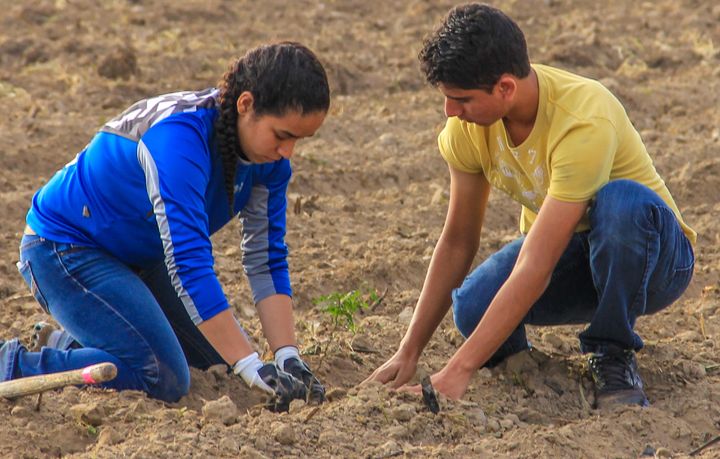
Forest Restoration on the Rio Grande
As a Quaker and Virginian who believes deeply in the equity of all people, last week was one of the most distressing of my life. We are all called in this moment to look searchingly at how we are living up to our obligation to honor, respect, and support other people. This includes the environmental conservation movement, where I have spent my professional energies, and all of the people and organizations within it.
At its best, environmental conservation in America has built lasting bridges across political, social, cultural, and economic divides. When we care for the earth together, we share in its fundamental bounty and grow closer to each other. We have the success stories to prove it.
For example, a powerful collaboration among federal agencies and non-profit organizations has helped stabilize ownership across generations for lower-income African-American forest owners in the Southeast. This sophisticated effort has matched ownership security with technical assistance to help these landowners manage forests for economic returns and ecological health. You can listen here to personal testimony from people in the region about the importance of this effort.
Another hopeful example is the restoration of Texas thornscrub forests along the Rio Grande. With all you might have read about the political and social tensions in this border region related to immigration, now picture a scene with more than 1000 diverse community members joining with government agencies and non-profit organizations to replant native thornscrub forests where they were cleared decades ago. It demonstrates how we can come closer together by serving shared interests like protecting a river and local wildlife, everyone with the same soil-covered hands and knees and sense of accomplishment.
A growing movement to restore tree canopy to America’s cities has also begun to help increase equity while engaging diverse people and organizations. If you map trees in virtually any American city correlated by race, income, and other demographic variables, you will continue to find troubling inequities—lower-income, racially-diverse neighborhoods routinely have much less tree canopy. Here’s the story for the Washington, D.C. area.
I wrote last year on the U.S. EPA Environmental Justice Blog about the implications of this widespread tree inequity for increasing urban heat islands and people’s exposure to extreme heat events and related health problems. There are other important impacts on people in “tree-free” neighborhoods including lower property values, educational attainment, and much more.
America’s urban forestry movement has become more effective and resolute than ever in equity-focused investment through a capacity-building model that engages community-based organizations and national non-profits working side-by-side with city leaders. In fact, the entire urban greening movement is on board. Just look at these examples like equity-focused tree planting programs in Detroit, urban agriculture in Boston, and park development in Los Angeles.
But there are also profound ways in which the conservation movement has still fallen short of its full vision to advance equity—including our collective geographic reach. Because of non-profit organizations’ reliance on philanthropy, it is often more feasible to reach underserved neighborhoods in a wealthy place like New York City, given the interest of many donors and foundations in their home communities. It has also often proved more feasible to fund landscape protection and restoration in the more remote corners of America that are iconic to philanthropic foundations and popular with wealthy individuals—places like Montana that have world-class amenities and rare natural attributes.
While these efforts represent very important progress, our movement will need new resolve to reach some of the places where people need us the most but can least provide assistance in the form of locally-available philanthropy, government grants, and other financial resources. This includes very low-income cities with few local philanthropists and limited municipal funding, as well as natural landscapes that have limited charisma for national audiences but huge importance to diverse local communities. I hope that this moment of reflection after Charlottesville will help our movement self-assess how we are doing in this respect.
There are other important challenges ahead, including faster progress diversifying the people working in conservation organizations and integrating more effectively with the broader social justice movement—organizations working on protecting voting rights, affordable housing, and other essential concerns. These are such profound and complex issues for our movement that I won’t try to give them full attention here, only name them as needing serious continued attention and total effort.
Instead I want to close by sharing my personal response to Charlottesville, which is choosing to dedicate time outside of my professional life to support organizations working to protect voting rights and renewing my past efforts to volunteer as a poll worker. Voting rights provide a critical litmus test for our nation’s commitment to treating each person as equal among us. A vote equates to personhood in our system. With real and present threats to voting rights for people who have faced past discrimination, now is the time to ignore the “lane lines” within the social justice movement and find ways to share our voices on foundational issues like this one.
Out of tragedy there is opportunity for insight and growth, if we are open and ready. The conservation movement has much to be proud of as a force for equity in America, but could do even more if we use this as a moment for deep reflection. Equity fully clad in green would be a good look.
